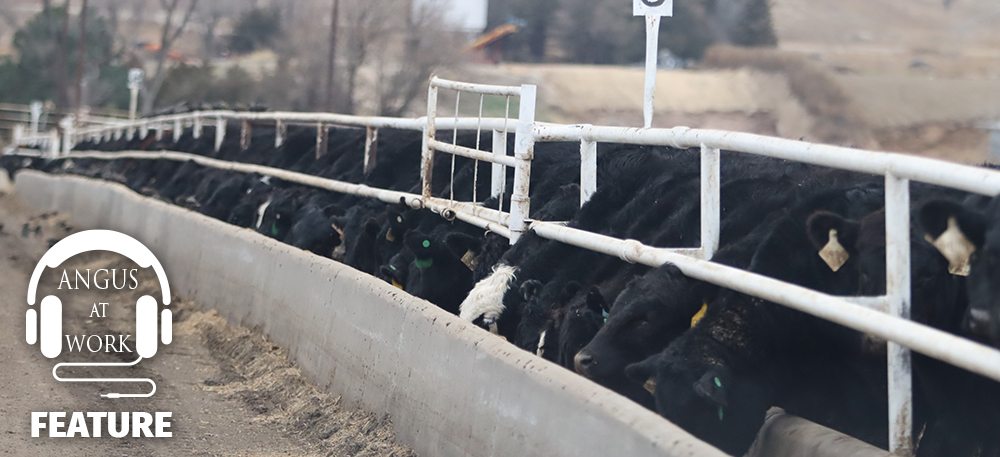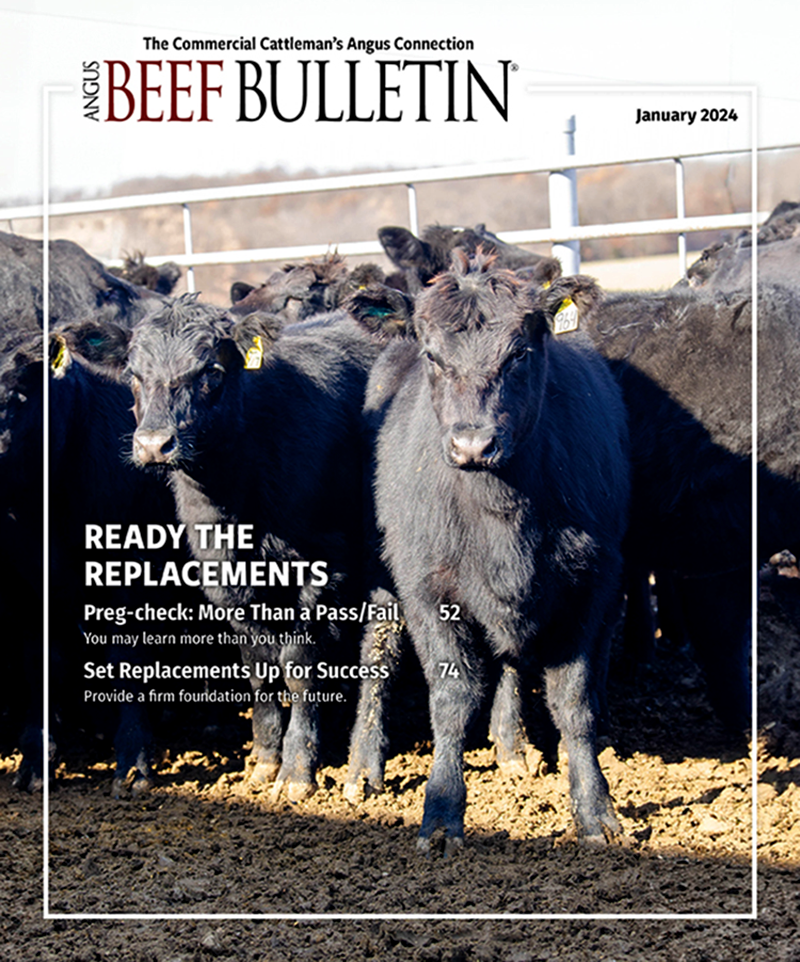 [Photo by Ryann Kats]
[Photo by Ryann Kats]Asking the Right Cattle Nutrition Questions
Information producers need to know about cattle nutrition, but may not have asked.
There are a lot of details in cattle nutrition. If someone asked you about dry-matter intake, could you explain it? How about the differences between concentrations and amounts? In an episode of the Angus at Work podcast, our team sat down with Dusty Abney, cow-calf nutritionist with Cargill Animal Nutrition, to discuss information cattlemen need to know about cattle nutrition but may not have asked.
Livestock nutrition is a specialty, just like public accounting or the medical field. So why will cattlemen enlist the services of tax specialists and medical professionals while shying away from using the knowledge of livestock nutrition specialists?
“People will go to the doctor and let them see to their medical needs. Same thing with a veterinarian,” said Abney. “The more progressive cattle people have a nutritionist, or at least have a resource that they can call. They may not have a specific nutritionist, but they have a company they can call or extension folks they have a good relationship with. That’s how I work with people.”
Dry-matter basics
According to Abney, a core concept to everything cattle industry-related is dry matter. While it may not sound like the most exciting topic, the importance of dry matter cannot be underestimated when it comes to nutrition or finances.
Understanding dry matter’s effect on moisture content, feeding volume, potential ration makeup, ration cost analysis, and how to compare cost when multiple options are on the table is paramount to producer success.
“How good a job did you do putting up your hay? How did you store your hay? How much waste did you have? Did you have fermentation happen in that hay bale you didn’t mean to because you put it up too wet? Did you buy hay that was too wet, it dried down later and you lost that through shrink?” asked Abney. “Even the folks that may not think that it’s a very important topic and that it doesn’t impact them very much, they still have to write a check for that sort of thing more often than they’d like to think about.”
With so many options in the marketplace for byproducts and supplemental nutrition, there can be some confusion when it comes to figuring the cost and nutrient value of additives to those of dry matter.
Producers need to have a way to figure out how much water is in their byproducts, said Abney. Taking a sample and putting it in an oven for a specific amount of time is one way of determining dry-matter values. Anyone looking to determine dry matter will need to weigh their sample before putting it in the oven, and then weigh the same sample when it comes out. The difference is moisture content, and what’s left over is the dry matter.
If all of that sounds a little too much like a science fair project, sending a sample off to your local extension service or to a commercial lab is a stress-free alternative.
Water works
Another crucial component of cattle nutrition? Clean water.
“We learned in 2011 in Texas that [water] was the rate-limiting nutrient, when we had to haul it everywhere because we didn’t have any. Water is of huge importance,” said Abney. “We see its effects more in the feedyard because it’s easier to see the acute effects of low water intake or illnesses getting passed through the water, that sort of thing. But just as many cow-calf outfits have water issues — more so probably than feedlots do. They just don’t know about it.”
The only way you’re going to know your water quality is bad is to test your water, which is something Abney encourages producers to do. Not only could a water quality test reveal key details to pinpointing animal nutrition — like whether there is iron in your water that could tie up nutrients available in a high-quality mineral — but a lower-quality water source could result in cattle drinking less and, therefore, eating less.
Producers should avoid water being their rate-limiting nutrient if they can help it, advised Abney.
Testing your water quality will be worth the cost, said Abney, “because you’re going to know what’s going on there.”
If producers want a cheap way to test their hay, Abney suggested entering the county hay show.
“They’ll generally test it for free,” he explained. “My recommendation is don’t just test your hay, test your forage a couple different times a year and build a database of … what I expect for this time of year. You have got to be strategic about that.”
The information above is summarized from the June 29, 2022, episode of Angus at Work. To access the full episode — including further information regarding cattle nutrition and calculating value — check out Angus at Work on Apple Podcasts or use the QR code to go directly to the episode.




